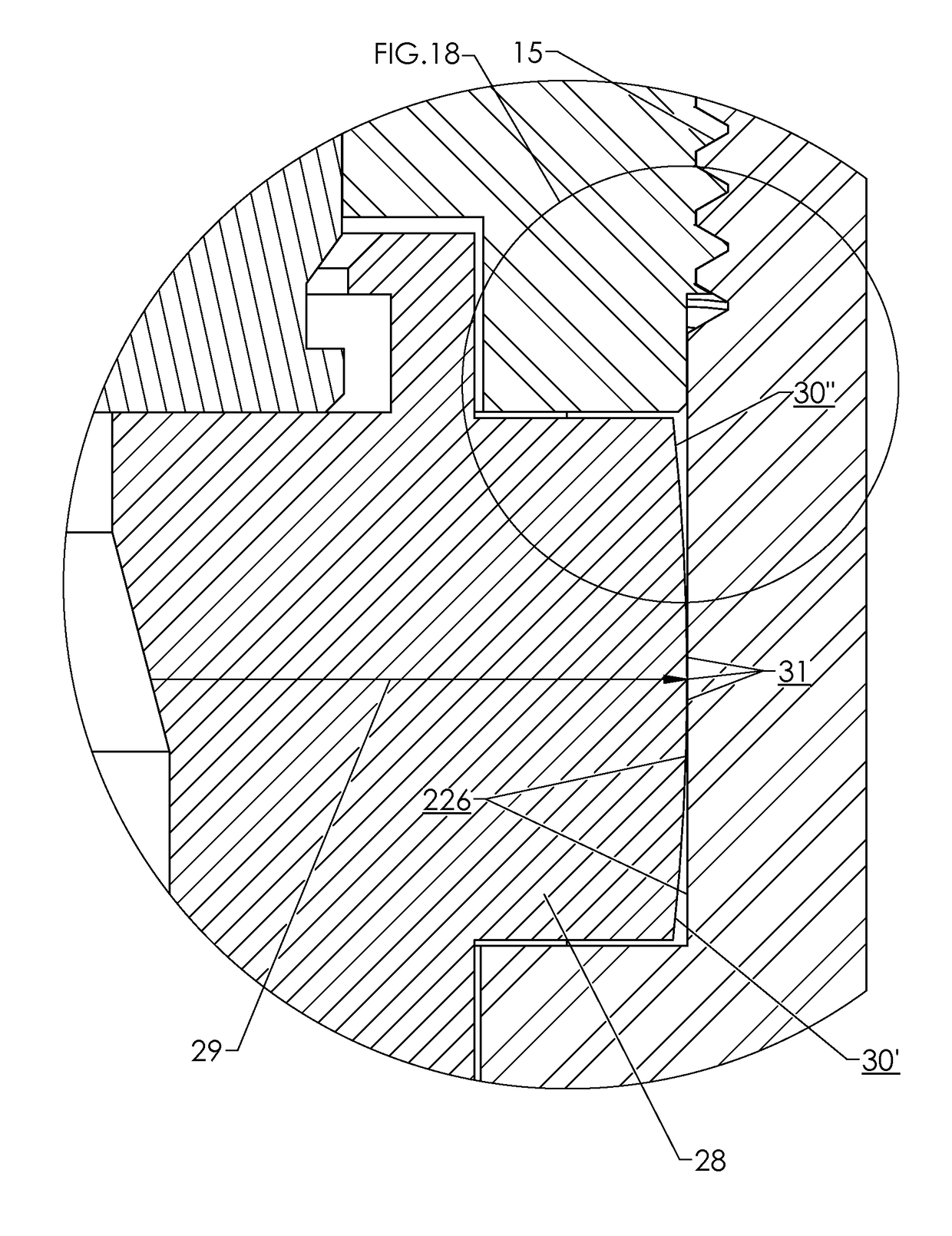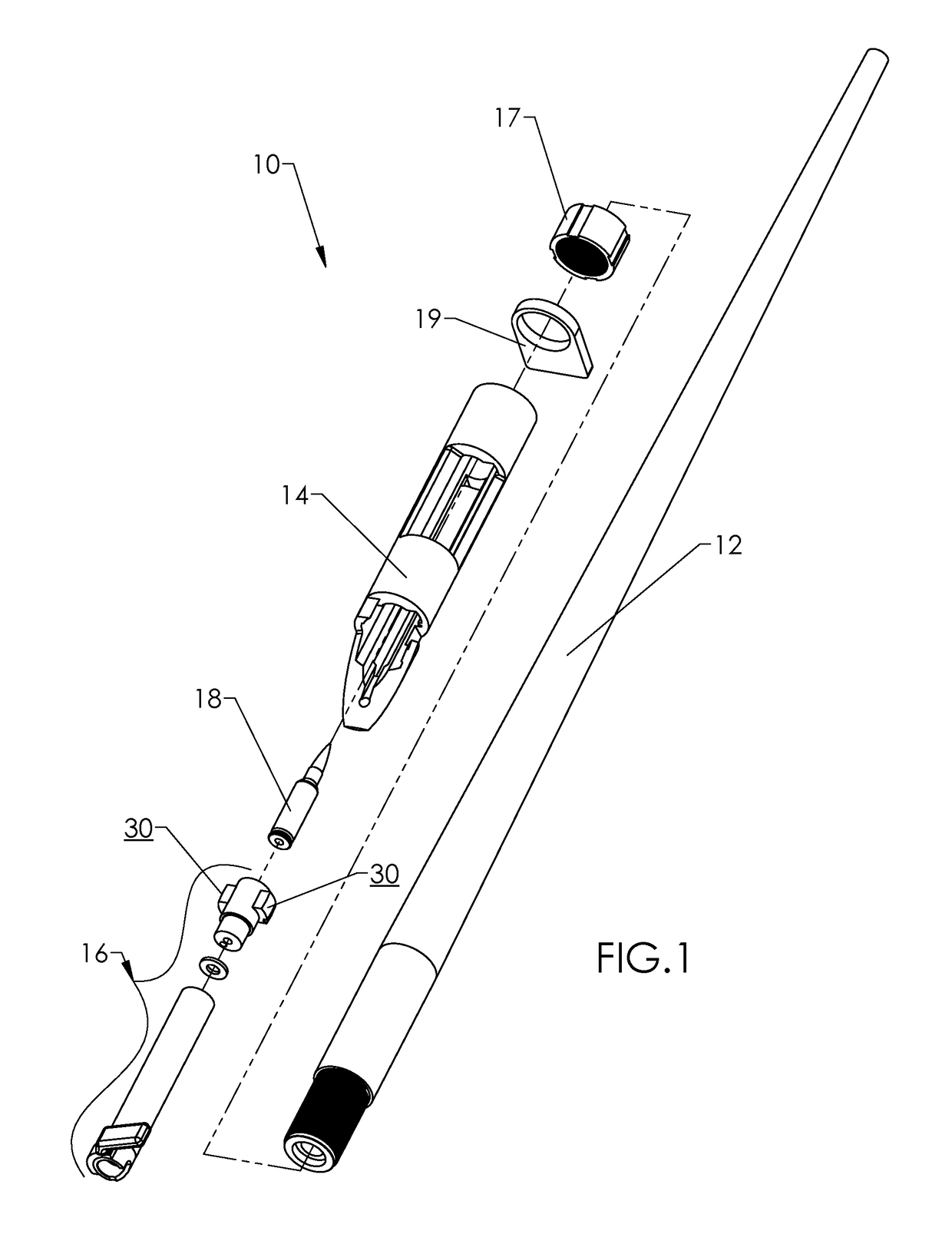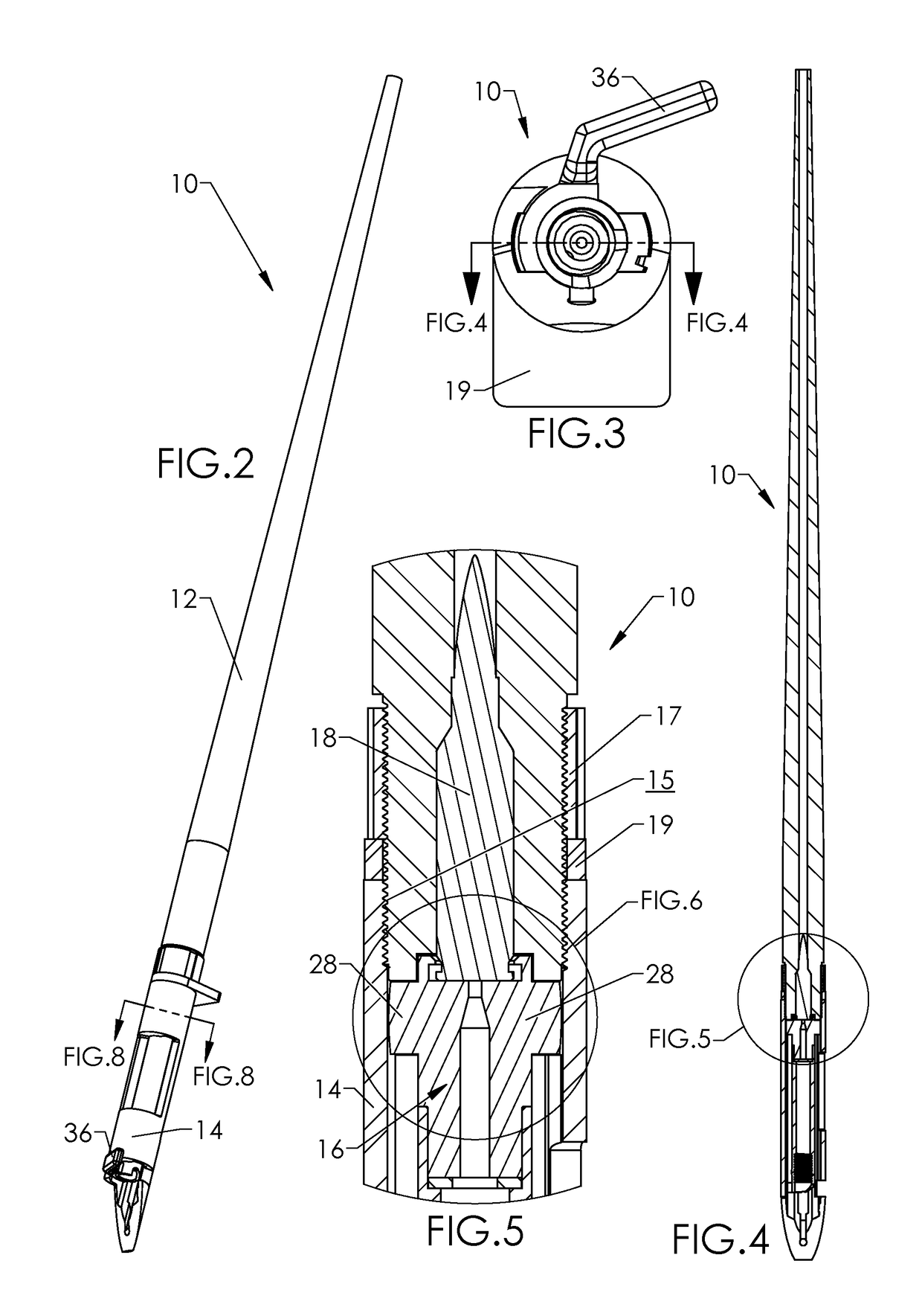Firearm with locking lug bolt, and components thereof, for accurate field shooting
a technology of locking lug bolts and components, applied in the field of firearms, can solve the problems of inability to accurately accurately identify firearms, work well, and inability to accurately locate benchrest rifles in the field, and achieve the effects of improving accuracy, improving accuracy, and increasing coaxial alignmen
- Summary
- Abstract
- Description
- Claims
- Application Information
AI Technical Summary
Benefits of technology
Problems solved by technology
Method used
Image
Examples
Embodiment Construction
Additional Background
Regarding Function of a Bolt Action Rifle:
[0043]Components and operation of a bolt action rifle are shown in the drawings and detailed in this document as an example of one type of firearm / action that may comprise one or more of the adaptations disclosed herein.
[0044]When a bolt handle is lifted, usually 60-90 degrees (depending on design) from the “locked” or “battery” position, the bolt moves to extract and eject any spent cartridge and moves into the unlocked / cocked position in which a firing pin is spring loaded in a position ready to strike a primer on the next cartridge case to be fired. The bolt in this unlocked position is enabled to move rearwardly in the boltway to collect and engage a new cartridge, so that, when the bolt is then pushed forward, it forces the new cartridge into the firing chamber. Then the bolt can be rotated, by rotating the bolt handle downwards, into the locked position. In this position, the rifle is ready to have the trigger pull...
PUM
 Login to View More
Login to View More Abstract
Description
Claims
Application Information
 Login to View More
Login to View More - R&D
- Intellectual Property
- Life Sciences
- Materials
- Tech Scout
- Unparalleled Data Quality
- Higher Quality Content
- 60% Fewer Hallucinations
Browse by: Latest US Patents, China's latest patents, Technical Efficacy Thesaurus, Application Domain, Technology Topic, Popular Technical Reports.
© 2025 PatSnap. All rights reserved.Legal|Privacy policy|Modern Slavery Act Transparency Statement|Sitemap|About US| Contact US: help@patsnap.com



